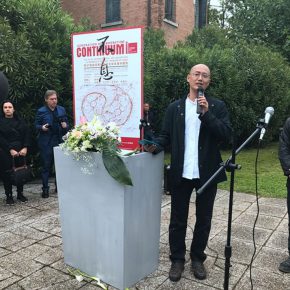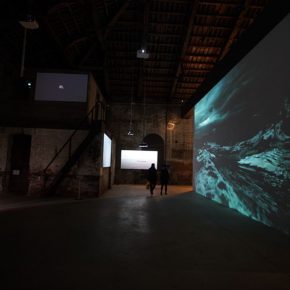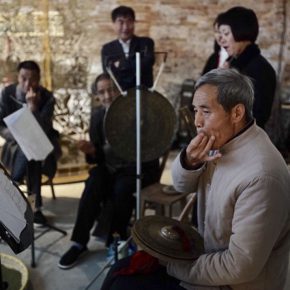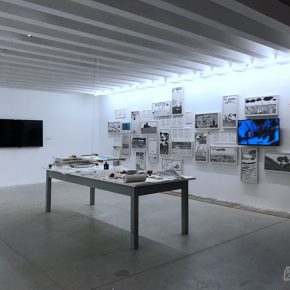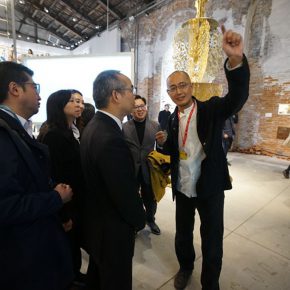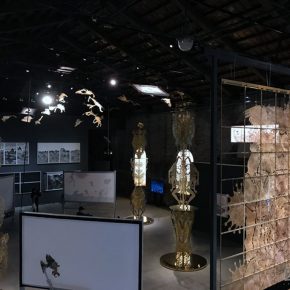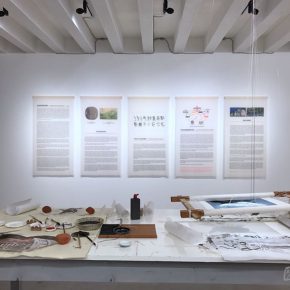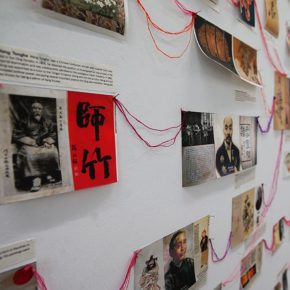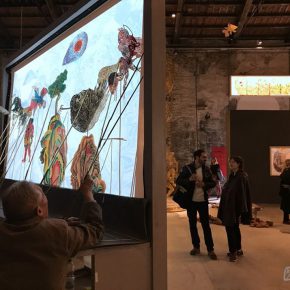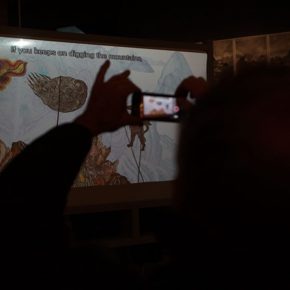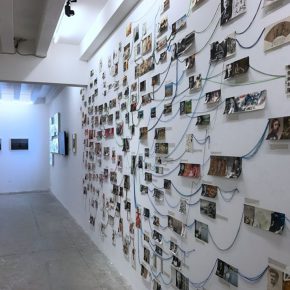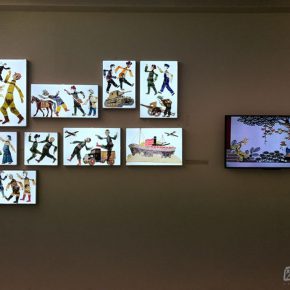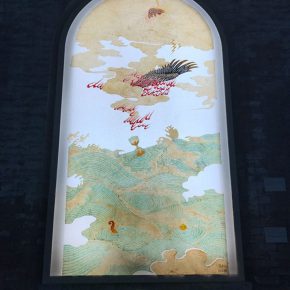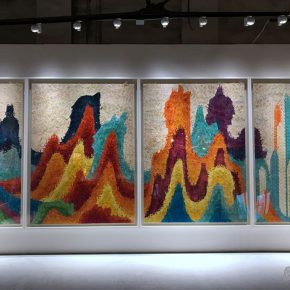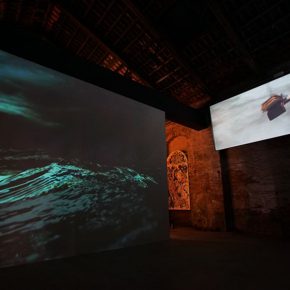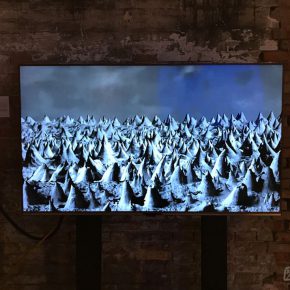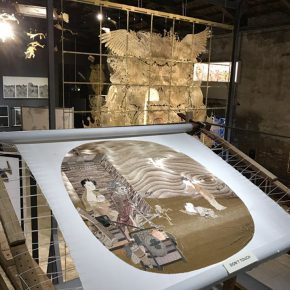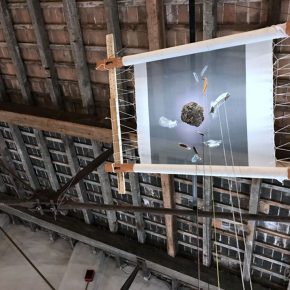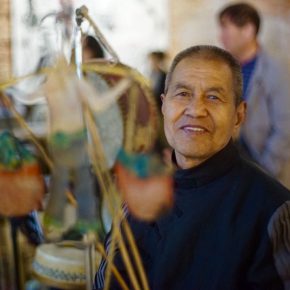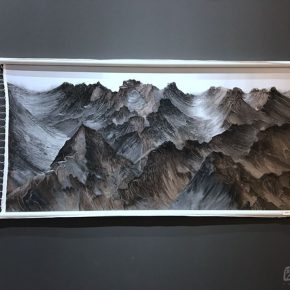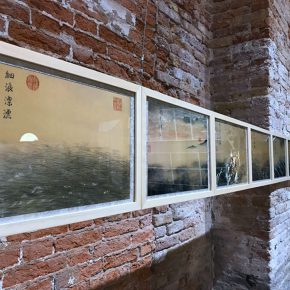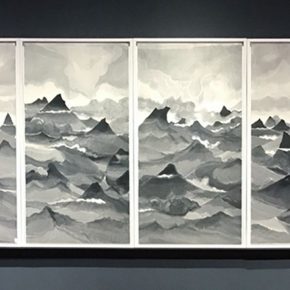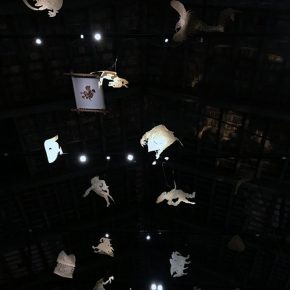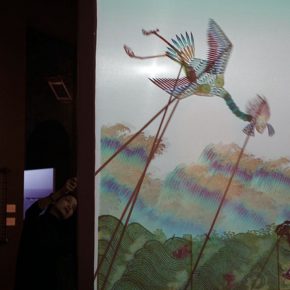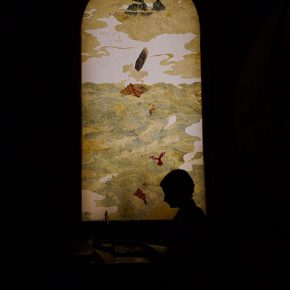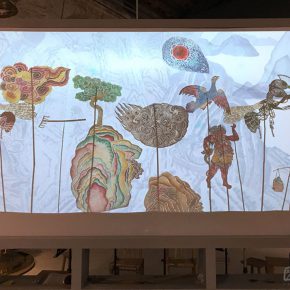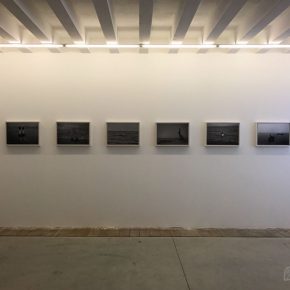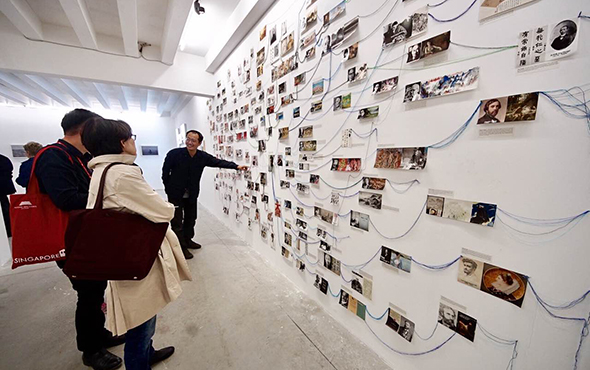
On the afternoon of May 11, 2017, “Continuum” the China Pavilion at the 57th Venice Biennale opened in the arsenal and virgin garden. More than 300 people including Zheng Xuan, Minister and Counsellor of the Embassy of the People's Republic of China in the Republic of Italy, Xu Rong, Cultural Counsellor, Liu Jianghua, Secretary for Home Affairs at the Hong Kong Special Administrative Region, Yan Dong, Deputy General Manager of China Arts and Entertainment Group, Qiu Zhijie, curator of the China Pavilion, and the participating artists, as well as the art circles and media at home and abroad attended the opening ceremony.
This Biennale is entitled “Viva Arte Viva” by the chief curator of the 57th Venice Biennale Christine Macel, which aims to become a biennial “designed for artists”, placing the artists in the front line, offering an opportunity of self-expression for the artists. Entitled “Continuum”, the China Pavilion is an exhibition organized by “an artist for artists”, showcasing the profound connotation of Chinese wisdom. It explains the mystery of the immortality of Chinese culture and Chinese art, in the form of positive interactions between contemporary art and folk art. The master of Suzhou embroidery Yao Huifen did not only reproduce the “Skeleton Fantasy Show” using one hundred stitches from Suzhou embroidery, he also participates in the Tang Nannan’s creation of “Oblivious Ocean 7”. Wu Jian’an and the master of shadow puppets, Wang Tianwen has been cooperating for many years and intends to start a new creation on Ma Yuan’s “Water Figure” and images of mountains and ocean. In addition, several artists mutually permeate each other, interacting and creating the delightful works, so that, the show forms an intertextual collective creation network. In such a cross-cooperative network, the lingering traditions are respectively inherited and innovated by contemporary artists and folk artists.
China Pavilion can be described as a gathering of classical art and the artists’ own potential is stimulated in the name of cooperation, taking the creation of the cooperative artists as an inspiration and opportunity to exert their own creations. It is different from the personal creation of the myth in the romantic era, in the infinite ancient legend, it gives a response and a start, looking forward to responses and being able to always add annotations and inscriptions. Chinese art is an infinite project, and it has not been completed yet. Each piece of Chinese art history is a section of the long scroll, while endless inscriptions are both comments and new creations. This long scroll will be infinitely stretched, which has never been exhausted.
It is a gathering of repeated responses and antiphonal songs between the old and new artists, to form an endless energy field. As the myth of “The Foolish Old Man, who removed the mountains with his family” tells us that “The son has his son, and the son has his grandson, the sons and grandsons are infinite. But the mountains can’t be increased, so that it will certainly move away one day?” – It is precisely the infinite spirit of art and civilization.
At the opening ceremony, Zheng Xuan, Minister and Counsellor of the Embassy of the People's Republic of China in the Republic of Italy congratulated the creation of the exhibition. Yan Dong, Deputy General Manager of China Arts and Entertainment Group, Qiu Zhijie, curator of the China Pavilion delivered a speech.
Zheng Xuan said that in recent years, the relations between China and Italy have flourished and the cooperation between the two countries has achieved fruitful results in the framework of the “Belt and Road”, while the comprehensive strategic partnership has been further deepened. Since the establishment of the Sino-Italian cultural cooperation mechanism, the cultural exchange and cooperation between the two countries has become more frequent. The exhibition of the China Pavilion at the Venice Biennale is an important event of cultural exchange between China and Italy. It selects a unique observation perspective to interpret the philosophy which was born in Chinese civilization from the soil of traditional Chinese art, to showcase the continuum and evolution of Chinese civilization.
Yan Dong said in his speech that the China Pavilion at the 57 Venice Biennale was supported by the Ministry of Culture in China, the curator Qiu Zhijie took “continuum” in response to “the infinity of art”, through the creation of four artists to present a variety of possibilities of the existence and development of current Chinese culture, with a variety of artistic contexts. These contexts emphasize the “narrative” nature of the exhibition space, which in turn increases the awareness of the China Pavilion itself.
Curator of China Pavilion Qiu Zhijie introduced the curatorial concept and said that, since ancient times, Chinese people did not care for immortality in the cultural tradition, but pursued infinity. In the story of “The Foolish Old Man, who removed the mountains with his family”, the immortal Taihang Mountains and Wangwu Mountains made way for the infinite Foolish Old Man’s family. In the Chinese mythology and ancient texts it is filled with a variety of varied stories, which are full of infinite energy. Kua Fu who was too thirsty to die because he was racing with the sun, Jingwei Bird demonstrates his attempt to use small stones to fill the sea, Dayu who spent thirteen years in remediating the big flood … these stories of infinity have become a cultural gene – “Continuum”, is our answer of the “eternal life”.
In addition, the show of multimedia shadow puppets entitled “Continuum – Removing the Mountains to Fill the Sea” caused the audience to cheer. Traditional shadow puppets of Wanwanqiang, real-time video and animation VJ, and automatic mechanical performances brought the shadow puppet which has an history of two thousand years into a new realm. The inheritors of shadow puppets from Hua County in Shaanxi Province, the artists, curators and teams from the China Pavilion, together with the Chinese student volunteers studying in the Venice Academy of Fine Art, Italy, were also involved in this wonderful performance.
The exhibition is supported by the Ministry of Culture of the People's Republic of China, hosted by the China Arts and Entertainment Group, co-organized by the Shanghai Ming Contemporary Art Museum and the Beijing Times Museum. After the end of the Venice Biennale, the exhibition of the China Pavilion will be shown at Shanghai Ming Contemporary Art Museum and the Beijing Times Museum at the same time during the period of Spring Festival in 2018.
Text and photo by the organizer, translated by Chen Peihua and edited by Sue/CAFA ART INFO.


